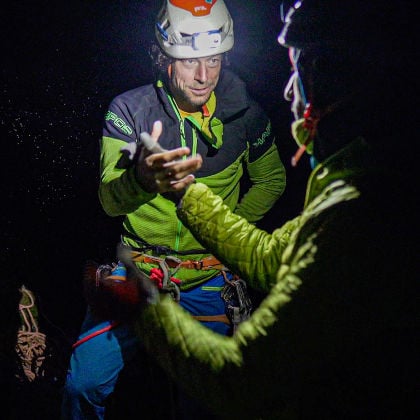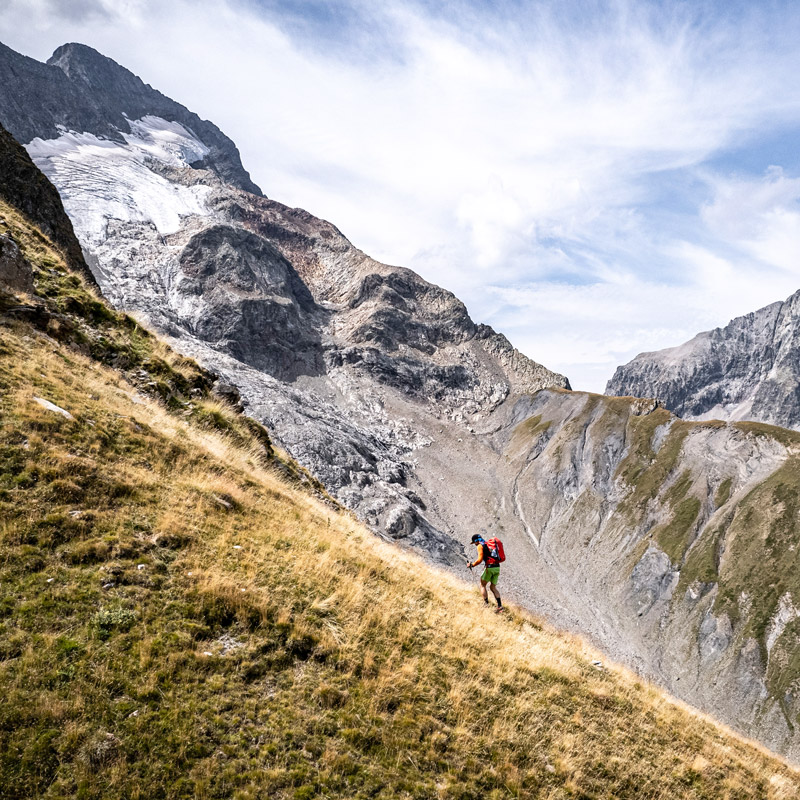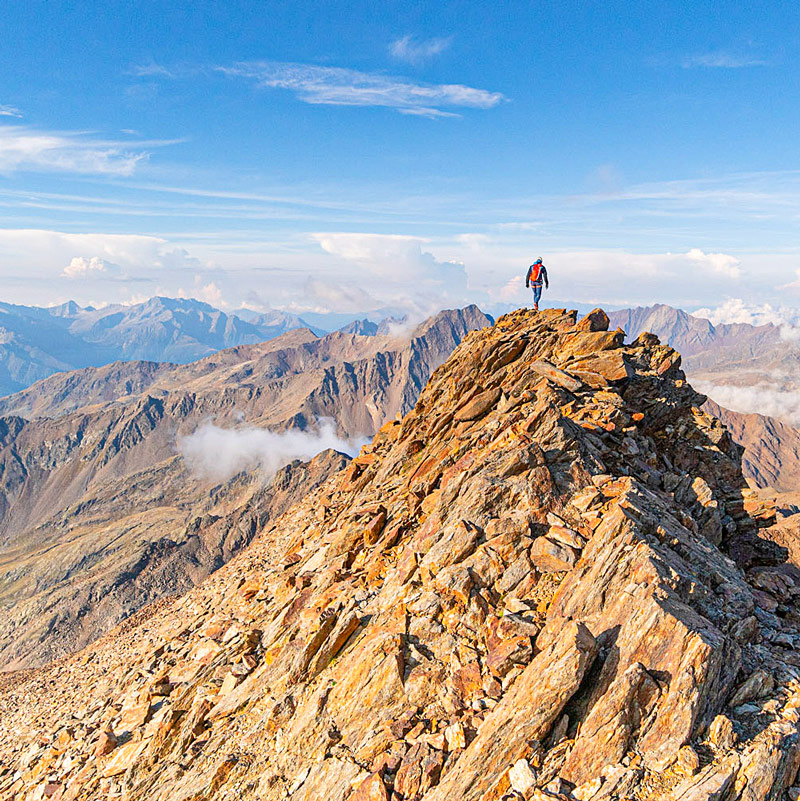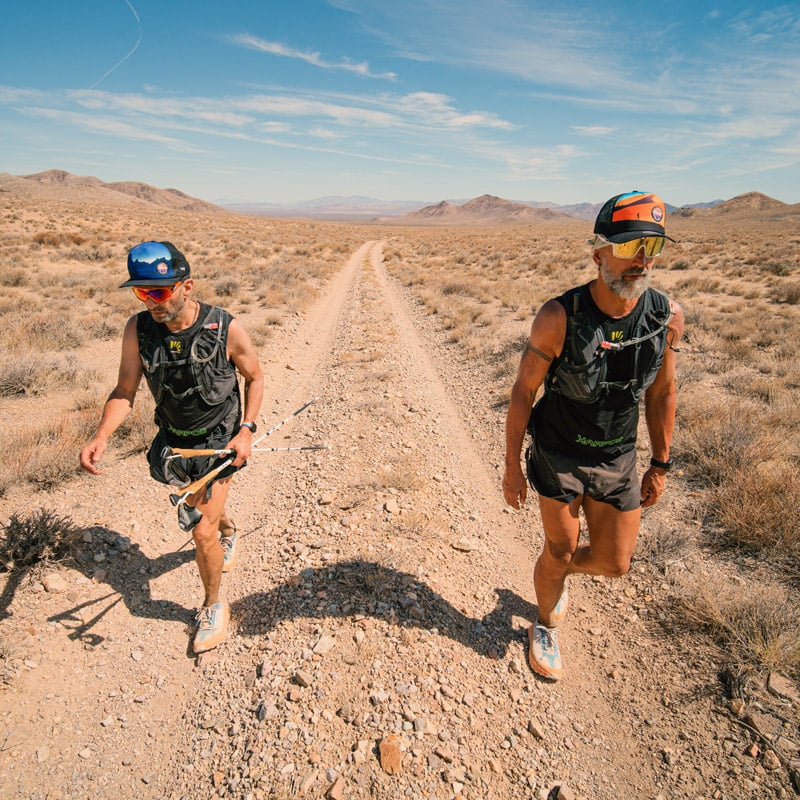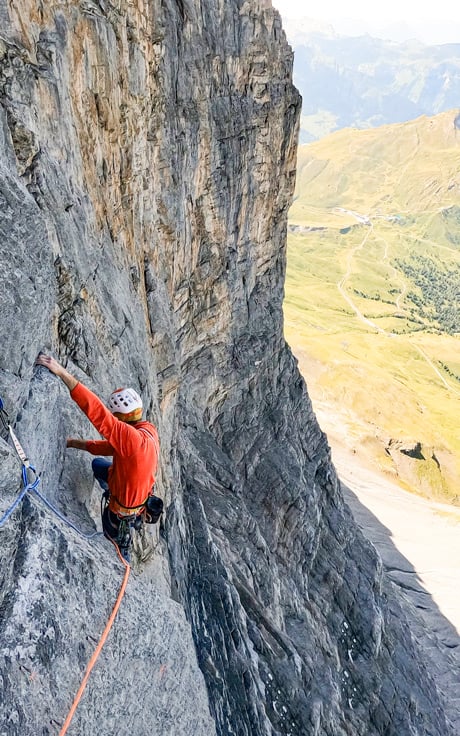
EMBRACING TRADITIONAL ALPINE MOUNTAINEERING
by Silvan Schüpbach
On the north face of the Eiger, Silvan Schüpbach and Peter von Känel rediscover traditional alpine mountaineering. The two spend days climbing vertical and overhanging rock, pursuing a “bold and elegant” line that symbolizes the rebirth of a mountaineering style that has never been forgotten.
The north face of the Eiger, one of the most iconic walls in the Alps, is where some of history’s best mountaineers have challenged themselves. Its reputation is built on the difficulties, the cold, and the terrible conditions experienced by those who choose to tackle it. Even today, climbing it requires exceptional concentration and skills.
Silvan Schüpbach chose to put himself to the test here, together with his climbing partner Peter von Känel. The two studied the wall closely, looking for weak points where they might be able to pass, creating a new route. Then, after waiting for the right conditions, they packed their bags and were ready to attack the wall on August 19, 2023. Their idea was to climb using only traditional protective gear, without bolts. “It seemed like a fascinating challenge to me,” explains Silvan. “Many new routes have been added to the north face of the Eiger in recent years. I’ve repeated many of them, and I’m fascinated by their quality and beauty. Developed with a great deal of effort and skill, they all have in common the fact that they were created with the help of power drills and bolts. Mountaineers climb the walls of the Eiger, and the protection is ‘ensured,’ with the help of modern drills. I don’t criticize this approach at all; it’s simply the logical evolution of climbing.” But the question that the Swiss mountaineer asked himself is a different one. It’s not about the ethics of the climb, but rather whether “Today’s mountaineering skills can be applied to the Eiger, but using traditional means of protection.”
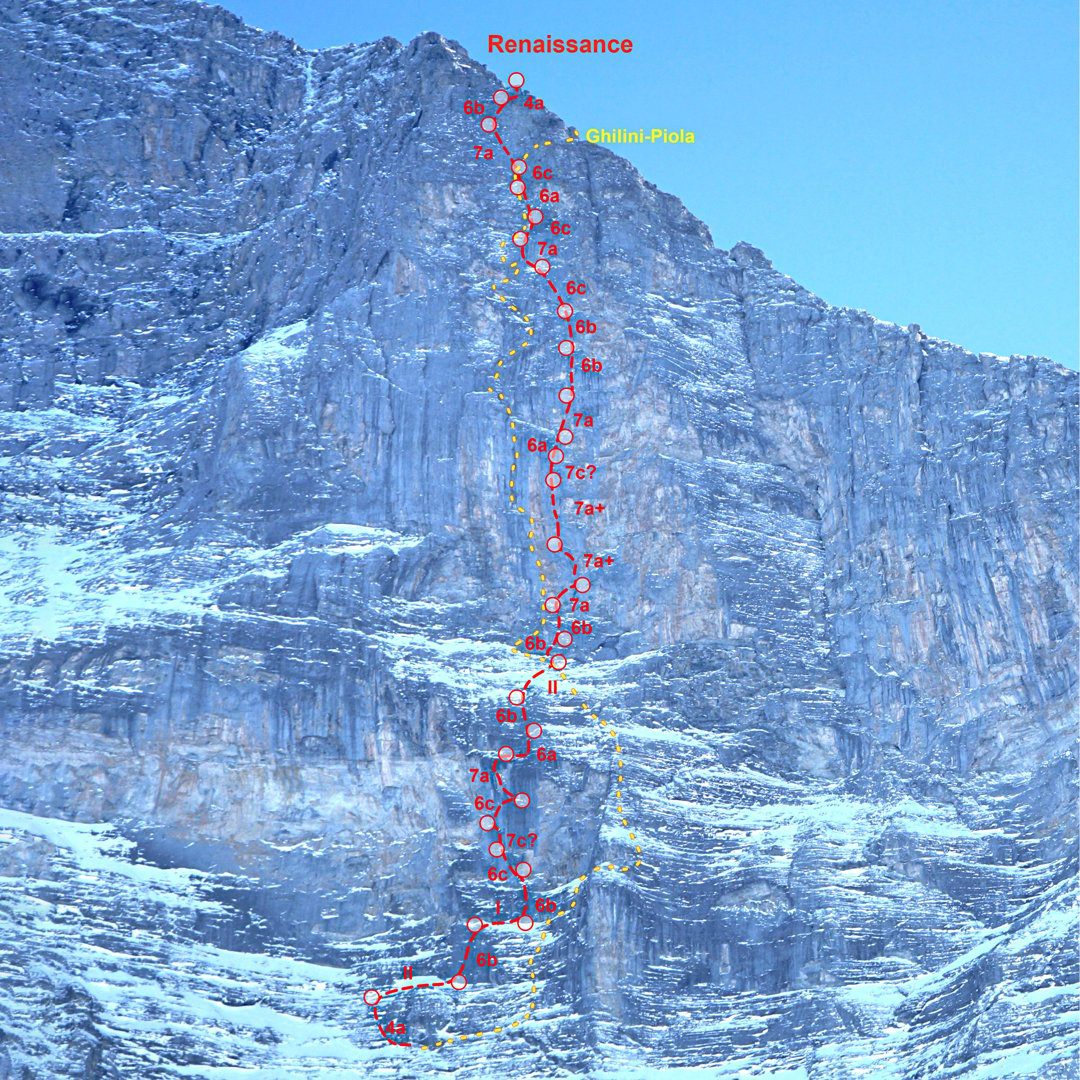
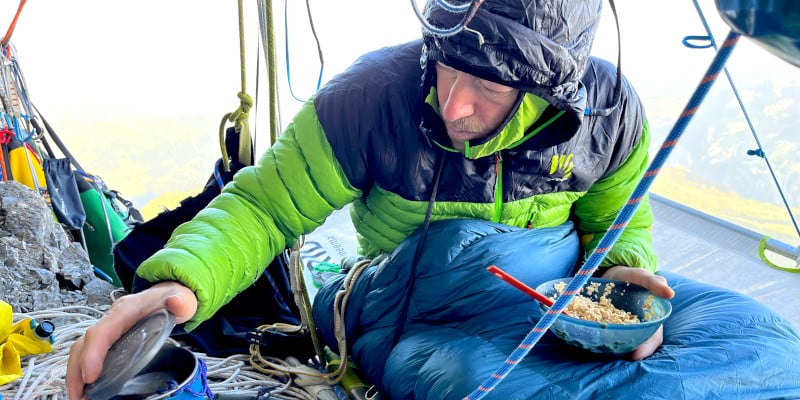
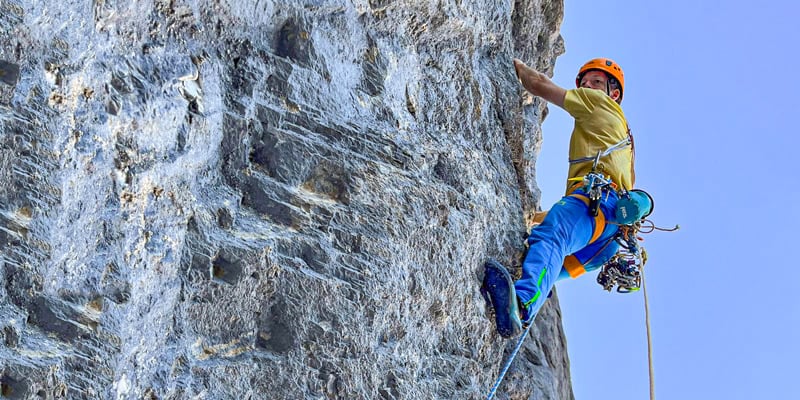
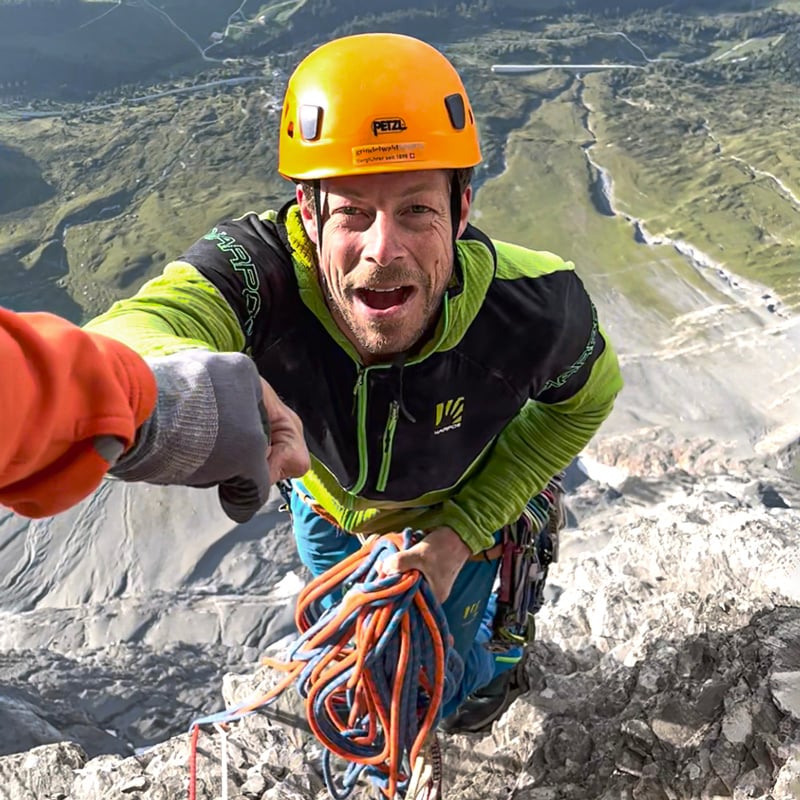
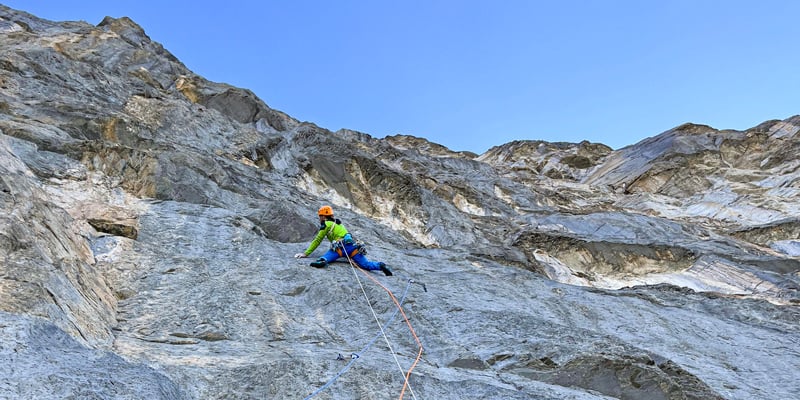
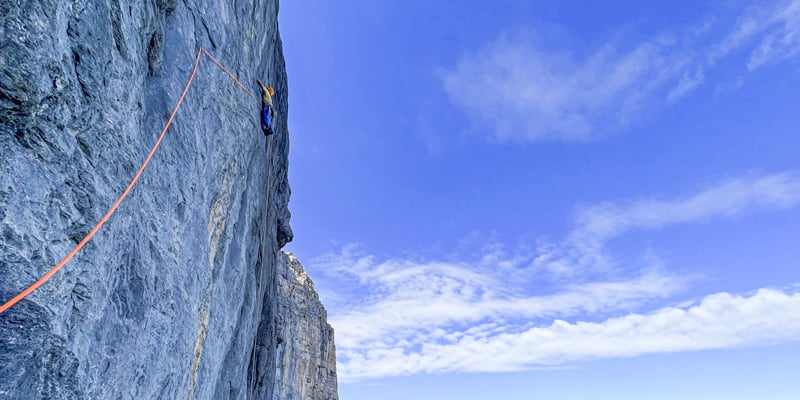
VISUALIZING THE NEW ROUTE
The two climbers remained on the wall for a total of five days, exploring — one move at a time — one of the last remaining unclimbed portions of the north face. The result is “Renaissance,” an invitation to rebirth, to the rediscovery of traditional alpine mountaineering. “It was Silvan who envisioned this fantastic line,” says von Känel. “I’m grateful to him for choosing to share this experience with me. In recent years, we’ve worked very intensively on climbing without bolts.” After first developing short routes on limestone walls, the two then made two first ascents on the Stockhorn and the Dündenhorn, “intermediate stages that made Renaissance possible.”
PRODUCTS USED
THE BIRTH OF RENAISSANCE
The five days of climbing were challenging and difficult but allowed them to establish what they defined without hesitation as a “bold and elegant” line. They free climbed almost the entire route, except for two short sections; it presents difficulties graded EX, 7c, and obligatory 7a. The two climbers left only eight pegs on the wall. The route moves up the right side of the mountain, along the Rote Flush, to the right of the direct Ghilini-Piola route. It initially crosses a particularly compact and overhanging stretch of rock, then rejoins the latter part of the Ghilini-Piola for three pitches before diverging for the last three pitches and emerging on the west ridge, at an elevation of 3,480 meters. “We found excellent rock, which allowed us to place protection easily. I think the absence of bolts gives this line originality and significance,” says Silvan — without forgetting the team: “Peter and I work well together and naturally complement each other.” “We have a similar, slightly strange sense of humor,” adds Peter. “We also share some culinary preferences, such as generous quantities of mayonnaise and butter.”
In short, a perfect team for a route that revisits the past. A difficult route that “cannot be approached superficially. It requires diligence and technical skill. You need a good eye, both to find the right line and to place protection.” One can almost say that repeating it is like completing a first ascent. “We would be happy if in the future more and more young mountaineers and climbers would return to relying on trad climbing,” concludes Silvan, “launching the rebirth of this style on walls large and small.”




